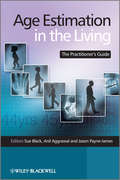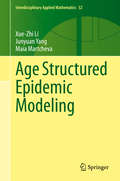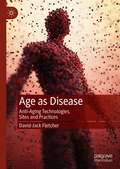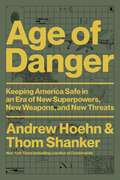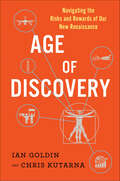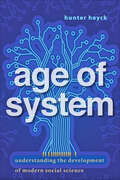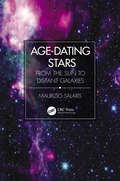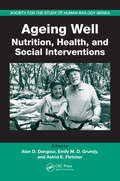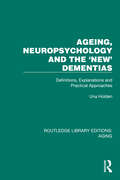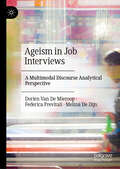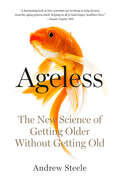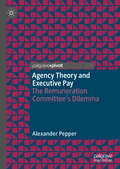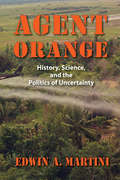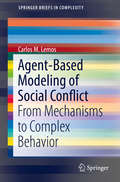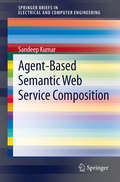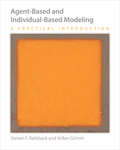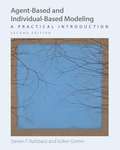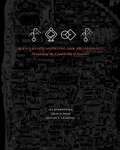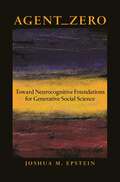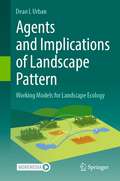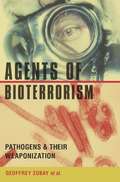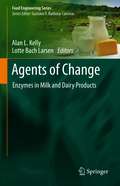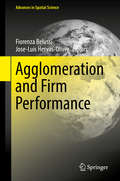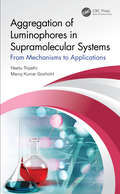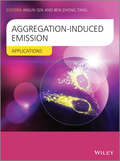- Table View
- List View
Age Estimation in the Living
by Jason Payne-James Anil Aggrawal Sue BlackThis book summarizes and explains the main approaches to age estimation in the living, defining when a parameter may be of use and raising awareness of its limitations. This text ensures that practitioners recognize when an assessment is beyond their area of expertise or beyond verification depending upon the clinical data available. Each key approach to age evaluation has been allotted a single chapter, written by an international leader in the particular field. The book also includes summary chapters that relay readily accessible data for use by the practitioner, and includes important "ageing milestones."This book is indispensable where problems of immigration and legal standing, juvenile vs. adult criminal status, and responsibilities of law enforcement to protect vulnerable persons are key issues on a daily basis. Medical practitioners, forensic practitioners such as pathology, odontology, anthropology and nursing, lawyers, and police would find this book incredibly useful.
Age Structured Epidemic Modeling (Interdisciplinary Applied Mathematics #52)
by Maia Martcheva Xue-Zhi Li Junyuan YangThis book introduces advanced mathematical methods and techniques for analysis and simulation of models in mathematical epidemiology. Chronological age and class-age play an important role in the description of infectious diseases and this text provides the tools for the analysis of this type of partial differential equation models. This book presents general theoretical tools as well as large number of specific examples to guide the reader to develop their own tools that they may then apply to study structured models in mathematical epidemiology. The book will be a valuable addition to the arsenal of all researchers interested in developing theory or studying specific models with age structure.
Age as Disease: Anti-Aging Technologies, Sites and Practices
by David-Jack FletcherAge as Disease explores the foundations of gerontology as a discipline to examine the ways contemporary society constructs old age as a disease-state. Framed throughout as ‘gerontological hygeine’, this book examines contemporary regimes, strategies and treatment protocols deployed throughout Australia, the United States, and the United Kingdom. The book deploys critical cultural theories such as biopolitics, somatechnics, ethics, and governmentality to examine how anti-aging technologies operate to problematise the aging body as always-already diseased, and how these come to constitute a movement of abolition, named here as ‘gerontological hygiene’.
Age of Danger: Keeping America Safe in an Era of New Superpowers, New Weapons, and New Threats
by Andrew Hoehn Thom ShankerAn urgent look at how America's national security machine went astray and how it fails to keep us safe—and what we can do to fix it. Again and again, American taxpayers are asked to open their wallets and pay for a national security machine that costs $1 trillion operate. Yet time and time again, the US government gets it wrong on critical issues. So what can be done? Enter bestselling author Thom Shanker and defense expert Andrew Hoehn. With decades of national security expertise between them and access to virtually every expert, they look at what&’s going wrong in national security and how to make it go right. Age of Danger looks at the major challenges facing America—from superpowers like Russia and China to emerging threats like pandemics, cybersecurity, climate change, and drones—and reimagines the national security apparatus into something that can truly keep Americans safe. Weaving together expert analysis with exclusive interviews from a new generation of national security leaders, Shanker and Hoehn argue that the United States must create an industrial-grade, life-saving machine out of a system that, for too long, was focused only on deterring adversaries and carrying out global military operations. It is a timely and crucial call to action—a call that if heeded, could save Americans lives, money, and our very future on the global stage.
Age of Discovery: Navigating the Risks and Rewards of Our New Renaissance
by Ian Goldin Chris KutarnaThe present is a contest between the bright and dark sides of discovery. To avoid being torn apart by its stresses, we need to recognize the fact—and gain courage and wisdom from the past. Age of Discovery shows how.Now is the best moment in history to be alive, but we have never felt more anxious or divided. Human health, aggregate wealth and education are flourishing. Scientific discovery is racing forward. But the same global flows of trade, capital, people and ideas that make gains possible for some people deliver big losses to others—and make us all more vulnerable to one another. Business and science are working giant revolutions upon our societies, but our politics and institutions evolve at a much slower pace. That’s why, in a moment when everyone ought to be celebrating giant global gains, many of us are righteously angry at being left out and stressed about where we’re headed.To make sense of present shocks, we need to step back and recognize: we’ve been here before. The first Renaissance, the time of Columbus, Copernicus, Gutenberg and others, likewise redrew all maps of the world, democratized communication and sparked a flourishing of creative achievement. But their world also grappled with the same dark side of rapid change: social division, political extremism, insecurity, pandemics and other unintended consequences of discovery.Now is the second Renaissance. We can still flourish—if we learn from the first.
Age of System: Understanding the Development of Modern Social Science
by Hunter HeyckIn the years after World War II, a new generation of scholars redefined the central concepts and practices of social science in America.Before the Second World War, social scientists struggled to define and defend their disciplines. After the war, "high modern" social scientists harnessed new resources in a quest to create a unified understanding of human behavior—and to remake the world in the image of their new model man.In Age of System, Hunter Heyck explains why social scientists—shaped by encounters with the ongoing "organizational revolution" and its revolutionary technologies of communication and control—embraced a new and extremely influential perspective on science and nature, one that conceived of all things in terms of system, structure, function, organization, and process. He also explores how this emerging unified theory of human behavior implied a troubling similarity between humans and machines, with freighted implications for individual liberty and self-direction. These social scientists trained a generation of decision-makers in schools of business and public administration, wrote the basic textbooks from which millions learned how the economy, society, polity, culture, and even the mind worked, and drafted the position papers, books, and articles that helped set the terms of public discourse in a new era of mass media, think tanks, and issue networks. Drawing on close readings of key texts and a broad survey of more than 1,800 journal articles, Heyck follows the dollars—and the dreams—of a generation of scholars that believed in "the system." He maps the broad landscape of changes in the social sciences, focusing especially intently on the ideas and practices associated with modernization theory, rational choice theory, and modeling. A highly accomplished historian, Heyck relays this complicated story with unusual clarity.
Age-Dating Stars: From the Sun to Distant Galaxies
by Maurizio SalarisThe determination of stellar ages has been - and still is - crucial for the development of our understanding of the universe, and to constrain theoretical models for the formation of galaxies and the evolution of planetary systems. Stellar ages provide scientists with timescales, and these timescales allow us to identify the relevant physical processes responsible for the development of cosmic structures. This book describes in a simple, yet rigorous, manner the vast array of techniques that have been developed and are currently being used to determine the ages of stars. It also explores how stellar ages inform our knowledge about planets, star clusters, galaxies, even distant galaxies that we cannot resolve into individual stars. Up-to-date with the latest research and technologies in the field, it includes the cutting-edge methods being used based on asteroseismology and discusses open problems that remain to be pondered in future research. It will be of interest to advanced undergraduates and graduate students studying astronomy, in addition to the general public. Key Features Presents an entertaining and accessible approach whilst also providing a rigorous and comprehensive presentation of the subject Describes how to unveil the ages of stellar populations in distant galaxies that we cannot resolve into individual stars Contains historical notes about these techniques, outstanding major problems, and a discussion on future developments in the field
Ageing Well: Nutrition, Health, and Social Interventions (Society for the Study of Human Biology)
by Alan D. Dangour Astrid E. Fletcher Emily M. D. GrundyMany current public health actions and policies aimed at older people revolve around the often prevailing view that failing health is a consequence of ageing. It is now clear that it is possible to postpone or even prevent much of the age-related decline in health that was once thought inevitable. Future policies must recognise this changing paradi
Ageing, Neuropsychology and the 'New' Dementias: Definitions, Explanations and Practical Approaches (Routledge Library Editions: Aging)
by Una HoldenUp to the 1990s, the influence of brain function disturbances and causes of dementia in the elderly had mostly been overlooked as a possible explanation for antisocial or unusual behaviour. As a result, these had tended not to be included in assessment and training programmes.
Ageism in Job Interviews: A Multimodal Discourse Analytical Perspective
by Dorien Van De Mieroop Federica Previtali Melina De DijnThis book investigates age categorizations and stereotyping in job interviews by drawing on a multimodal discourse analytical approach. While previous research on ageism has focused on what happens before or after the job interview, there is substantial evidence supporting the idea that the job interview is a pivotal moment in this respect as well. This is because the way in which the interaction unfolds significantly influences not only recruiters’ ultimate hiring decisions, but also candidates’ interest in pursuing the job offer further. This phase in the recruitment process is thus deserving of further scrutiny when it comes to ageism. The authors delve into age stereotypes regarding ‘old’ as well as ‘young’ age and tease out how they are ‘talked into being’ during job interviews, both by recruiters and candidates. By shedding light on the discursive dynamics of age-based prejudice, stereotyping and discrimination, this books thus aims to further understanding regarding how ageism actually plays out in in real life job interview interactions. The book will be of interest to academics working in fields including interactional sociolinguistics, pragmatics, diversity studies, human resource management and discursive psychology.
Ageless: The New Science of Getting Older Without Getting Old
by Andrew SteeleA startling chronicle by a brilliant young scientist takes us onto the frontiers of the science of aging, and reveals how close we are to an astonishing extension of our life spans and a vastly improved quality of life in our later years.Aging--not cancer, not heart disease--is the true underlying cause of most human death and suffering. We accept as inevitable that as we advance in years our bodies and minds begin to deteriorate and that we are ever more likely to be felled by dementia or disease. But we never really ask--is aging necessary? Biologists, on the other hand, have been investigating that question for years. After all, there are tortoises and salamanders whose risk of dying is the same no matter how old they are. With the help of science, could humans find a way to become old without getting frail, a phenomenon known as "biological immortality"?In Ageless, Andrew Steele, a computational biologist and science writer, takes us on a journey through the laboratories where scientists are studying every bodily system that declines with age--DNA, mitochondria, stem cells, our immune systems--and developing therapies to reverse the trend. With bell-clear writing and intellectual passion, Steele shines a spotlight on a little-known revolution already underway.
Agency Theory and Executive Pay: The Remuneration Committee's Dilemma
by Alexander PepperThis new book examines the relationship between agency theory and executive pay. It argues that while Jensen and Meckling (1976) were right in their analysis of the agency problem in public corporations they were wrong about the proposed solutions. Drawing on ideas from economics, psychology, sociology and the philosophy of science, the author explains how standard agency theory has contributed to the problem of executive pay rather than solved it. The book explores why companies should be regarded as real entities not legal fictions, how executive pay in public corporations can be conceptualised as a collective action problem and how behavioral science can help in the design of optimal incentive arrangements. An insightful and revolutionary read for those researching corporate governance, HRM and organisation theory, this useful book offers potential solutions to some of the problems with executive pay and the standard model of agency.
Agent Orange: History, Science, and the Politics of Uncertainty
by Edwin A. MartiniTaking on what one former U.S. ambassador called "the last ghost of the Vietnam War," this book examines the far-reaching impact of Agent Orange, the most infamous of the dioxin-contaminated herbicides used by American forces in Southeast Asia. Edwin A. Martini's aim is not simply to reconstruct the history of the "chemical war" but to investigate the ongoing controversy over the short- and long-term effects of weaponized defoliants on the environment of Vietnam, on the civilian population, and on the troops who fought on both sides. Beginning in the early 1960s, when Agent Orange was first deployed in Vietnam, Martini follows the story across geographical and disciplinary boundaries, looking for answers to a host of still unresolved questions. What did chemical manufacturers and American policymakers know about the effects of dioxin on human beings, and when did they know it? How much do scientists and doctors know even today? Should the use of Agent Orange be considered a form of chemical warfare? What can, and should, be done for U.S. veterans, Vietnamese victims, and others around the world who believe they have medical problems caused by Agent Orange? Martini draws on military records, government reports, scientific research, visits to contaminated sites, and interviews to disentangle conflicting claims and evaluate often ambiguous evidence. He shows that the impact of Agent Orange has been global in its reach affecting individuals and communities in New Zealand, Australia, Korea, and Canada as well as Vietnam and the United States. Yet for all the answers it provides, this book also reveals how much uncertainty--scientific, medical, legal, and political--continues to surround the legacy of Agent Orange.
Agent-Based Modeling of Social Conflict: From Mechanisms to Complex Behavior (SpringerBriefs in Complexity)
by Carlos M. LemosThis Brief revisits and extends Epstein's classical agent-based model of civil violence by considering important mechanisms suggested by social conflict theories. Among them are: relative deprivation as generator of hardship, generalized vanishing of the risk perception ('massive fear loss') when the uprisings surpass a certain threshold, endogenous legitimacy feedback, and network influence effects represented by the mechanism of dispositional contagion. The model is explored in a set of computer experiments designed to provide insight on how mechanisms lead to increased complexity of the solutions. The results of the simulations are compared with statistical analyses of estimated size, duration and recurrence of large demonstrations and riots for eight African countries affected by the "Arab Spring," based on the Social Conflict Analysis Database. It is shown that the extensions to Epstein's model proposed herein lead to increased "generative capacity" of the agent-based model (i. e. a richer set of meaningful qualitative behaviors) as well the identification of key mechanisms and associated parameters with tipping points. The use of quantitative information (international indicators and statistical analyses of conflict events) allows the assessment of the plausibility of input parameter values and simulated results, and thus a better understanding of the model's strengths and limitations. The contributions of the present work for understanding how mechanisms of large scale conflict lead to complex behavior include a new form of the estimated arrest probability, a simple representation of political vs economic deprivation with a parameter which controls the `sensitivity' to value, endogenous legitimacy feedback, and the effect of network influences (due to small groups and "activists"). In addition, the analysis of the Social Conflict Analysis Database provided a quantitative description of the impact of the "Arab Spring" in several countries focused on complexity issues such as peaceful vs violent, spontaneous vs organized, and patterns of size, duration and recurrence of conflict events in this recent and important large-scale conflict process. This book will appeal to students and researchers working in these computational social science subfields.
Agent-Based Semantic Web Service Composition (SpringerBriefs in Electrical and Computer Engineering)
by Sandeep KumarAgent-based Semantic Web Service Composition closely examines the various aspects of SWS composition, and explores the concept that a Multi-Agent system can serve as an SWS composition system in which its agents can interact with one another to satisfy a high-level goal. In addition to surveying various proposed multi-agent-based SWS composition models, the book also highlights the cognitive parameter-based semantic web service selection models that can be used in multi-agent-based SWS composition, and outlines a new negotiation agreement-based SWS composition that can outperform existing techniques. Agent-based Semantic Web Service Composition is intended for researchers and practitioners as a reference guide for optimizing SWS composition and implementing multi-agent systems. Instructors and other academics working in a related field will also find the book invaluable.
Agent-Based and Individual-Based Modeling
by Volker Grimm Steven F. RailsbackAgent-based modeling is a new technique for understanding how the dynamics of biological, social, and other complex systems arise from the characteristics and behaviors of the agents making up these systems. This innovative textbook gives students and scientists the skills to design, implement, and analyze agent-based models. It starts with the fundamentals of modeling and provides an introduction to NetLogo, an easy-to-use, free, and powerful software platform. Nine chapters then each introduce an important modeling concept and show how to implement it using NetLogo. The book goes on to present strategies for finding the right level of model complexity and developing theory for agent behavior, and for analyzing and learning from models. Agent-Based and Individual-Based Modeling features concise and accessible text, numerous examples, and exercises using small but scientific models. The emphasis throughout is on analysis--such as software testing, theory development, robustness analysis, and understanding full models--and on design issues like optimizing model structure and finding good parameter values.The first hands-on introduction to agent-based modeling, from conceptual design to computer implementation to parameterization and analysis Filled with examples and exercises, with updates and supplementary materials at http://www.railsback-grimm-abm-book.com Designed for students and researchers across the biological and social sciences Written by leading practitionersLeading universities that have adopted this book include: Amherst CollegeBrigham Young UniversityCarnegie Mellon UniversityMiami UniversityNorthwestern UniversityOld Dominion UniversityPortland State UniversityRhodes CollegeSusquehanna UniversityUniversity College, DublinUniversity of ArizonaUniversity of South FloridaUniversity of Virginia
Agent-Based and Individual-Based Modeling: A Practical Introduction, Second Edition
by Volker Grimm Steven F. RailsbackThe essential textbook on agent-based modeling—now fully updated and expandedAgent-Based and Individual-Based Modeling has become the standard textbook on the subject for classroom use and self-instruction. Drawing on the latest version of NetLogo and fully updated with new examples, exercises, and an enhanced text for easier comprehension, this is the essential resource for anyone seeking to understand how the dynamics of biological, social, and other complex systems arise from the characteristics of the agents that make up these systems.Steven Railsback and Volker Grimm lead students stepwise through the processes of designing, programming, documenting, and doing scientific research with agent-based models, focusing on the adaptive behaviors that make these models necessary. They cover the fundamentals of modeling and model analysis, introduce key modeling concepts, and demonstrate how to implement them using NetLogo. They also address pattern-oriented modeling, an invaluable strategy for modeling real-world problems and developing theory.This accessible and authoritative book focuses on modeling as a tool for understanding real complex systems. It explains how to pose a specific question, use observations from actual systems to design models, write and test software, and more.A hands-on introduction that guides students from conceptual design to computer implementation to analysisFilled with new examples and exercises and compatible with the latest version of NetLogoIdeal for students and researchers across the natural and social sciencesWritten by two leading practitionersSupported by extensive instructional materials at www.railsback-grimm-abm-book.com
Agent-based Modeling For Archaeology: Simulating The Complexity Of Societies
by Colin Wren Stefani Crabtree Iza RomanowskaTo fully understand not only the past, but also the trajectories, of human societies, we need a more dynamic view of human social systems. Agent-based modeling (ABM), which can create fine-scale models of behavior over time and space, may reveal important, general patterns of human activity. Agent-Based Modeling for Archaeology is the first ABM textbook designed for researchers studying the human past. Appropriate for scholars from archaeology, the digital humanities, and other social sciences, this book offers novices and more experienced ABM researchers a modular approach to learning ABM and using it effectively. Readers will find the necessary background, discussion of modeling techniques and traps, references, and algorithms to use ABM in their own work. They will also find engaging examples of how other scholars have applied ABM, ranging from the study of the intercontinental migration pathways of early hominins, to the weather–crop–population cycles of the American Southwest, to the trade networks of Ancient Rome. This textbook provides the foundations needed to simulate the complexity of past human societies, offering researchers a richer understanding of the past—and likely future—of our species. The electronic version of this textbook can be downloaded for free at: https://santafeinstitute.github.io/ABMA/
Agent_Zero: Toward Neurocognitive Foundations for Generative Social Science (Princeton Studies in Complexity #25)
by Joshua M. EpsteinThe Final Volume of the Groundbreaking Trilogy on Agent-Based ModelingIn this pioneering synthesis, Joshua Epstein introduces a new theoretical entity: Agent_Zero. This software individual, or "agent," is endowed with distinct emotional/affective, cognitive/deliberative, and social modules. Grounded in contemporary neuroscience, these internal components interact to generate observed, often far-from-rational, individual behavior. When multiple agents of this new type move and interact spatially, they collectively generate an astonishing range of dynamics spanning the fields of social conflict, psychology, public health, law, network science, and economics.Epstein weaves a computational tapestry with threads from Plato, Hume, Darwin, Pavlov, Smith, Tolstoy, Marx, James, and Dostoevsky, among others. This transformative synthesis of social philosophy, cognitive neuroscience, and agent-based modeling will fascinate scholars and students of every stripe. Epstein's computer programs are provided in the book or on its Princeton University Press website, along with movies of his "computational parables.?Agent_Zero is a signal departure in what it includes (e.g., a new synthesis of neurally grounded internal modules), what it eschews (e.g., standard behavioral imitation), the phenomena it generates (from genocide to financial panic), and the modeling arsenal it offers the scientific community. For generative social science, Agent_Zero presents a groundbreaking vision and the tools to realize it.
Agents and Implications of Landscape Pattern: Working Models for Landscape Ecology
by Dean L UrbanThis is an ecology textbook focused on key principles that underpin research and management at the landscape scale. It covers (1) agents of pattern (the physical template, biotic processes, and disturbance regimes); (2) scale and pattern (why scale matters, how to ‘scale’ with data, and inferences using landscape pattern metrics); and (3) implications of pattern (for metapopulations, communities and biodiversity, and ecosystem processes). The last two chapters address emerging issues: urban landscapes, and adapting to climate change. This book stems from two graduate-level courses in Landscape Ecology taught at the Nicholas School of the Environment at Duke University. The subject has evolved over time, from a concepts-based overview of what landscape ecology is, to a more applied practicum on how one does landscape ecology. As landscape ecology has matured as a discipline, its perspectives on spatial heterogeneity and scale have begun to permeate into a wide range of other fields including conservation biology, ecosystem management, and ecological restoration. Thus, this textbook will bring students from diverse backgrounds to a common level of understanding and will prepare them with the practical knowledge for a career in conservation and ecosystem management.
Agents of Bioterrorism: Pathogens and Their Weaponization
by Geoffrey ZubayThis new work offers a clear and thorough account of the threats posed by bioterrorism from the perspective of biologists. The authors examine thirteen disease-causing agents, including those responsible for anthrax, the plague, smallpox, influenza, and SARS. Each chapter considers a particular pathogen from the standpoint of its history, molecular biology, pathology, clinical presentation, diagnosis, weaponization, and defenses. The book also examines strategies for making vaccines and protecting the population in a bioterror attack.
Agents of Change: Enzymes in Milk and Dairy Products (Food Engineering Series)
by Alan L. Kelly Lotte Bach LarsenThe enzymology of milk and other products is of enormous significance for the production and quality of almost every dairy product. Milk itself is a complex biological fluid that contains a wide range of enzymes with diverse activities, some of which have identifiable functions while others are present as an accidental consequence of the mechanism of milk secretion. Over time milk enzymology has become an incredibly essential component of milk and other dairy product production, and with advancing technology and processing techniques, its importance is at its peak. Dairy Enzymology presents an expansive overview of the enzymology of milk and other dairy products, focusing on the use of indigenous and endogenous enzymes in milk and exogenous enzymes in cheese processing. A full section is dedicated to the enzymology of bovine milk, focusing on the main families of indigenous enzymes as well as their potential significance in the mammary gland plus the technological significance for the properties of dairy products. Implications for the manufacture and ripening of cheese plus the use of enzymes such as alkaline phosphatase for measuring heat treatment in milk are explored in full, and the role of milk protease plasmin and other indigenous enzymes in the age-gelation is focused on. Further sections focus on enzymes found in raw milk and enzymes deliberately added for manufacture or modification of properties and the manufacture of food ingredients from dairy-derived ingredients. The key bacterial families are discussed in depth as well as their known contributions to the quality of dairy products. With its comprehensive scope and fully up-to-date coverage of dairy product enzymology, this text is a singular source for researchers looking to understand this essential dairy processing aspect.
Agglomeration and Firm Performance (Advances in Spatial Science)
by Fiorenza Belussi Jose-Luis Hervas-OliverThis contributed volume studies and explains the effect of agglomeration on a firm’s innovation and performance. It presents new cases as well as new topics within the agglomeration phenomenon, exploring also their role under the Great Recession. Beyond the analysis of regions or clusters, this volume focuses on firms within agglomerations and captures this phenomenon from different perspectives, contexts and diverse literatures. Specifically, it looks at the question under what circumstances exert generate benefits on firms’ performance, and how those gains are generated and distributed, usually asymmetrically, across agglomerated firms. In this context, the book addresses topics such as networks, collocation, labor mobility, firm’s strategies, innovation, competitiveness and collective actions across a diverse set of literatures, including economic geography, business economics, management, social networks, industrial districts, international business, sociology or industry dynamics.
Aggregation of Luminophores in Supramolecular Systems: From Mechanisms to Applications
by Neetu Tripathi Manoj Kumar GoshishtSupramolecular aggregation—driven by weak non-covalent interactions, such as van der Waals, π–π interactions, hydrogen bonding, and electrostatic—has been utilized to build sensing platforms with improved selectivity and sensitivity. Supramolecular aggregates, owing to cooperative interactions, higher sensitivity and selectivity, relatively weak and dynamic non-covalent interactions, and environmental adaptation, have achieved better sensing performance than that of molecular sensory systems that rely on sensors with delicate structures. Aggregation of Luminophores in Supramolecular System: From Mechanisms to Applications describes recent advances in supramolecular chemistry, in which the luminophores are almost non-luminescent in the molecular state, but become highly emissive in the aggregate state. These advances bring new opportunities and challenges for the development of supramolecular chemistry. The intermolecular non-covalent interactions have been considered to be the main driving forces for fabricating supramolecular systems with aggregating luminophores and have an important influence on the luminescence properties of the probes. Based on these unique properties, luminescent supramolecular aggregates have greatly promoted the development of novel materials for applications as sensors, bio-imaging agents, organic electronic devices, and in the field of drug delivery. Features: Discussion of fundamental and interdisciplinary aspects of the aggregation in supramolecular systems. Narration of intermolecular interactions and the photophysical phenomenon of aggregation in supramolecular systems. Comparative discussion on recent developments in aggregation-induced quenching (AIQ) and aggregation-induced emission (AIE), and drawbacks of AIQ. Description of the technological applications of aggregation as biological sensors, chemical sensors, organic electronic materials, and in the field of drug delivery. A convenient format for checking formulas and definitions. This book surveys highlights of the progress made in the field of the aggregation of luminophores in supramolecular chemistry. It is hoped that the work will form a foundation (and indeed a motivation) for new workers in the area, as well as also being useful to experienced supramolecular chemists. It may also aid workers in the biological area to see Nature’s aggregation in a new light. Further, the approach employed has been designed to provide readable background material for use with graduates, senior undergraduates, research professionals, and industries.
Aggregation-Induced Emission
by Anjun Qin Ben Zhong TangAggregation-Induced Emission (AIE) is a novel photophysical phenomenon which offers a new platform for researchers to look into the light-emitting processes from luminogen aggregates, from which useful information on structure-property relationships may be collected and mechanistic insights may be gained. The discovery of the AIE effect opens a new avenue for the development of new luminogen materials in the aggregate or solid state. By enabling light emission in the practically useful solid state, AIE has the potential to expand significantly the technological applications of luminescent materials.Aggregation-Induced Emission: Fundamentals is the first book to explore the fundamental issues of AIE, including the design, synthesis, and photophysical behavior of AIE-active molecules and polymers. The control of the morphological structures of the aggregates of AIE-active materials, and the experimental investigation and theoretical understanding of the AIE mechanism, are also covered in this volume.Topics covered include:AIE in group 14 metallolesAIE in organic ion pairsRed light-emitting AIE materialsSupramolecular structure and AIEAIE-active polymersEnhanced emission by restriction of molecular rotationCrystallization-induced emission enhancementTheoretical understanding of AIE phenomenaThis book is essential reading for scientists and engineers who are designing optoelectronic materials and biomedical sensors, and will also be of interest to academic researchers in materials science and physical and synthetic organic chemistry, as well as physicists and biological chemists.
